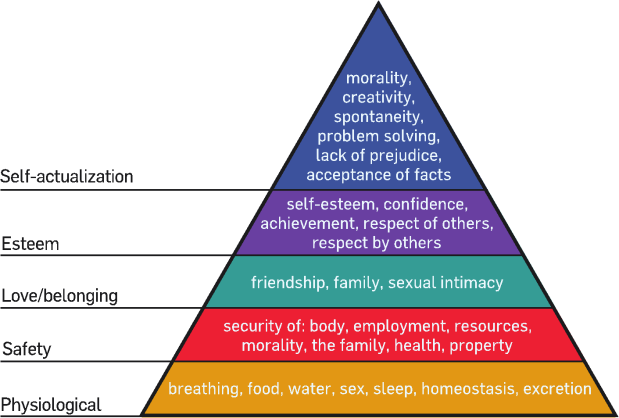In about a week, I’ll have been an executive director for six months. Most days, I completely love my job. I feel confident about the future, and I know I’m making a tangible difference.
But *gulp* — It’s hard. It’s harder than I care to admit. Some days I feel like pulling a Burger and leaving a Post-It note on my office door, “I’m sorry. I can’t. Don’t hate me.”
I’ve made some bad decisions. But I’ve also made some pretty good ones. So I’m going to share my successes — and own up to my mistakes — to give you a little insight into what it’s like being a new executive director.
The Bad: I operated without a plan. I will never forget the first moment I had where I felt like a fool in this position. I had been in the job for about six weeks. After several weeks of just taking in information, I hit the ground, sprinting towards improvements. Then I went to lunch with a friend who’s a development expert, and she looked at me square in the eyes and said, “So, what’s your fundraising plan?”
I think I may have literally choked on my water. I had gotten so caught up in “fixing” things that I had completely neglected to make a blueprint for my work. I had mentally lined up what needed to be done, and certainly had a vague timeline attached, but in my mind, I was still new to the job. I was still getting my feet wet! It wasn’t time for a plan yet!
But it totally was. Before I started pulling together sponsorship packages, before I updated any logos, before I built a potential donor database, I should have been working on my fundraising plan. In writing. With a schedule and calendar, with dollar figures attached, with priorities and a budget… The whole deal. I won’t say I ran back to the office after that lunch and pulled together The Plan immediately, but it did become a priority. And I have one now. I know if I work my plan, I will be successful. But without a plan, I will definitely fail.
The Good: I asked the board of directors for a financial review. When I was going through the hiring process, it was pretty clear that the organization had gone through a difficult financial time. So I was nervous. I asked budgetary questions and looked at annual reports, but I wasn’t satisfied that I was getting the full picture. And I wanted to know what I was getting into. So I requested an audit as a contingency of my employment. The organization didn’t have the funds to complete a full audit, so we compromised on a financial review.
This was, hands down, the best decision I’ve made in my first six months, even though it was technically before the six months started. The financial review was thorough enough that it would have uncovered any major problems or blunders; not that I expected any, but I needed to be sure. And more importantly, it got me and my board of directors all on the same page. It indicated to them that I would be serious about the business end of the organization, and it ensured I was completely accountable from Day One.
The Bad: I let my ego dictate my actions. In my younger days, I really had a tendency to speak without a filter. I said whatever popped into my mind, I laid everything out on the table, and then I patted myself on the back for being honest and open.
In my younger days, I was an idiot.
Only really self-involved people think that what they have to say is important enough for everyone to hear. Fortunately I’ve had a whole host of great mentors who have subtly taught me that lesson through the years. And I’ve shaken the worst of those bad habits as I’ve gotten older. But I recently had an incident where the 19-year-old version of me stood tall and proud — and worst of all, loud.
I won’t recount all of the gory details, but sufficed to say, my mouth got ahead of my brain. At the time, I felt like I was saying something pretty important, but less than an hour after the meeting was over, I realized I had been a buffoon. I was sick with embarrassment and regret, and all I could think about was turning back the clock and keeping my mouth shut.
My words had no real lasting impact, no major damage to anyone or anything. Except that I can’t help but wonder how the people in that meeting perceive me now. By not remembering that discretion is the better part of valor, did I irrevocably change their impression of me? As an executive director, the wisest words are generally the most prudent.
The Good: I recognized our problems. When I accepted this position, I did so knowing that the organization was suffering from an increasingly poor reputation in the community. Internal conflict had caused division in the organization, and stakeholders and community leaders knew there was trouble. My background is in public relations, so this was a problem I was equipped to deal with.
For the first month on the job, I listened a lot. I listened to donors and constituents talk about bad experiences. I listened to community members voice concerns about the organization’s reputation. I listened to every complaint and every suggestion, and then I apologized whenever necessary. I was transparent about the organization’s previous struggles, but explained that we were all moving forward together. I didn’t try to put a pretty face on the problems or tell people that past problems weren’t my fault. I empathized, apologized, and laid out the plan for a better future. And folks in this community have been excited to move forward with me.
While I’m confident I have more mistakes ahead of me, I’m also pretty confident I’ll have more good ideas. I’m hoping that the failures of the first six months will lead to wiser decisions in the next six. What are some of the best and worst decisions you made on your first six months of a job? I’d love to hear about your successes and failures, and advice for the future!




